Half-Life 2: The Orange Box Hands-On - Episode Two and Team Fortress 2
We get our first hands-on time with Half-Life 2: Episode Two and the multiplayer action game Team Fortress 2.
When Half-Life 2: The Orange Box ships later this year, it promises to deliver an impressively wide range of gameplay. First, there's Half-Life 2: Episode Two, the second part of the trilogy follow-up to 2004's blockbuster Half-Life 2. (The Orange Box will also include Half-Life 2 as well as Episode One to get newcomers up to speed.) Next is Team Fortress 2, the stylized, team-based multiplayer action game that's been in development off and on over the past decade. Finally, The Orange Box will also include Portal, the innovative first-person action puzzle game. While we've had a chance to play Portal, we hadn't seen Episode Two or Team Fortress 2 in action. Well, things have changed, and we got some hands-on time with both for our first impressions on the games.
First, let's cover Episode Two. The middle part of any trilogy tends to be the most challenging to make, since it has to serve as a bridge between the beginning and the end. The challenge is to make sure that the middle episode has its own energy and narrative, and Valve has thought this out. As programmer and project lead David Speyrer and designer Gautam Babbar explained to us, Episode Two is all about variety and throwing new challenges and experiences at the player. There will also be significant story revelations, as you'll finally learn more about the mysterious G-Man who's been dogging you since the original Half-Life, as well as those mysterious Combine advisors who have appeared only on video screens thus far. And yes, a main character will die.
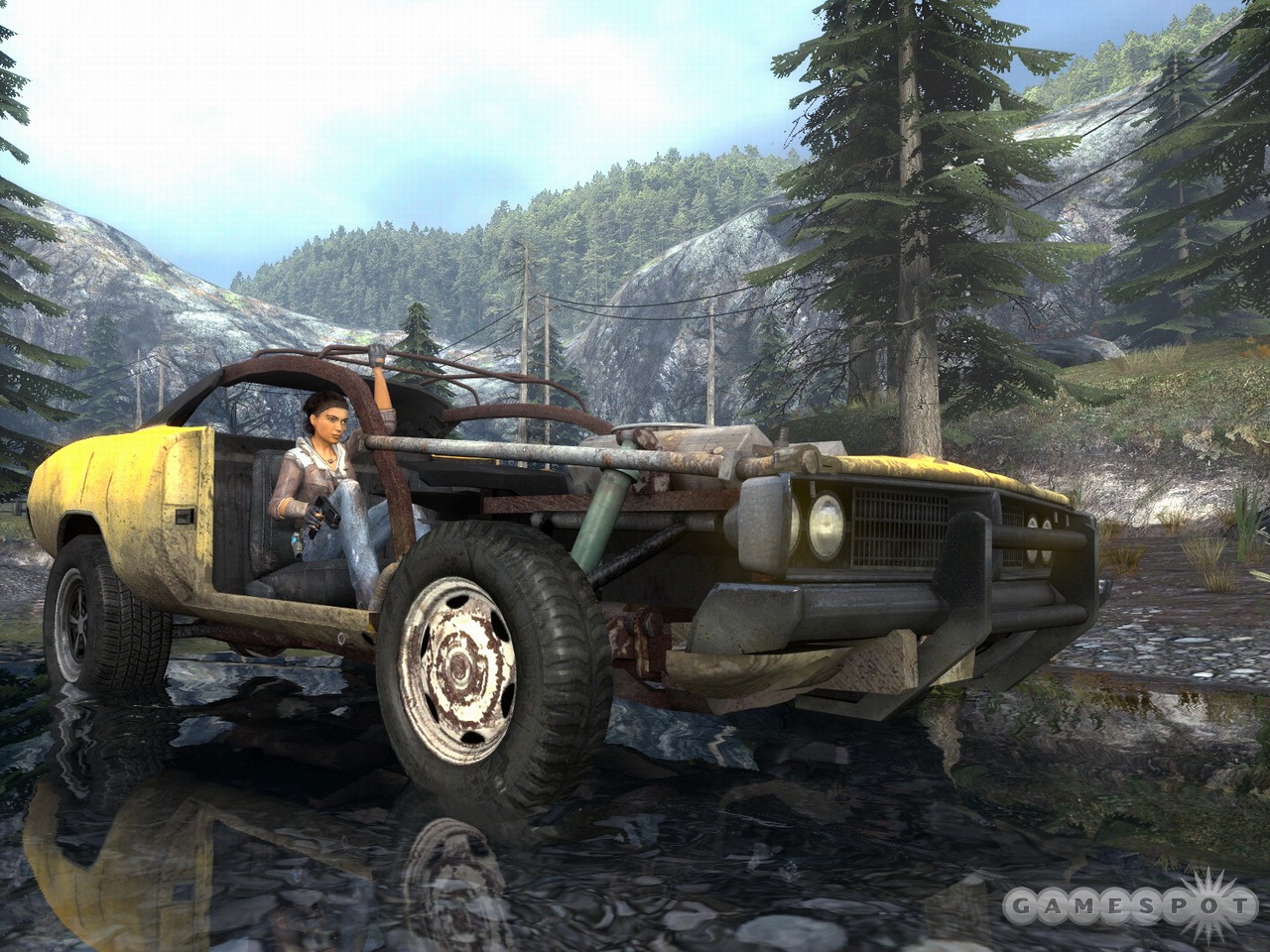
An early scene in the episode has you (playing as Gordon) waking up in the middle of a train wreck, trapped inside one of the cars. Thankfully, your companion and ally Alyx Vance is outside and is able to free you with use of the trusty gravity gun, which is able to manipulate and throw around large, physical objects. As soon as you emerge from the wreckage, you realize that you're no longer in City 17, the setting of Half-Life 2 and Episode One. Instead, you're surrounded by wilderness and forest--specifically, the White Forest. With City 17 and its Citadel destroyed, a giant dimensional portal has begun to form over the ruins of the city. That portal links to the Combine's alien home, and if it opens, the Combine will rush reinforcements to Earth, dooming humanity. Thankfully, one of the things that Alyx stole from the Citadel in Episode One are important Combine portal codes--but to be useful they must be delivered to the scientists, led by Dr. Eli Vance and the new character, Dr. Magnusson, in their secret lab. And to do that, you've got to get through the White Forest with Combine forces in pursuit.
Episode Two is one, big high-speed chase, and it promises to be epic. We got to play through different sections of the episode, and there's going to be a lot to see. For instance, early on you'll travel through the underground tunnel network used by the antlions, those vicious alien insects from Half-Life 2. There are new species of antlions to encounter, such as workers that spit toxic venom at you. This underground also sports some of the new graphical enhancements made to the Source engine, such as bioluminescent shaders that make the antlions glow in the dark. The caverns themselves look spectacular, with glistening rock walls and deep pools of water, which are useful since antlions apparently can't swim.
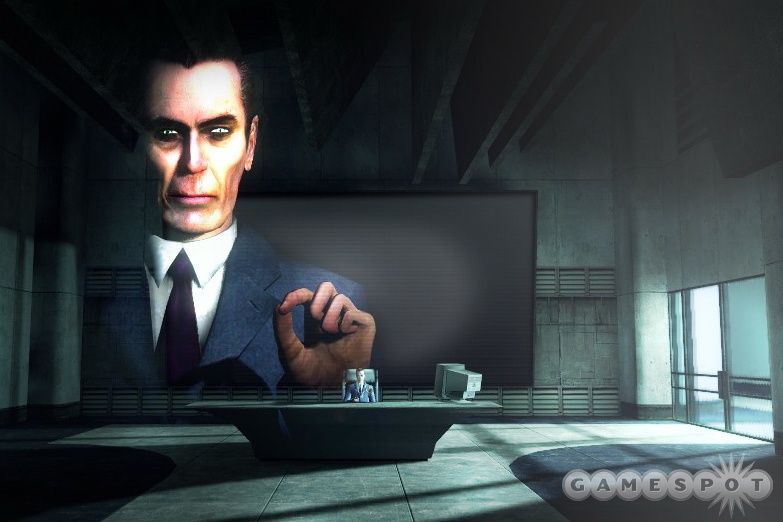
Next up was a dash through an antlion-infested valley alongside Alyx and one of the new vortigaunt allies introduced in the episode. The vortigaunts were one of the alien opponents in the original Half-Life, but in Half-Life 2 they became friends. This battle was pretty large-scale, with a seemingly endless stream of antlions rushing Gordon and his allies. The good news is that those giant Combine thumpers, designed to keep antlions away, are scattered throughout the valley, and it's possible to resupply at crates found next to them. There are also plenty of explosive barrels scattered about, and they can be picked up and thrown using the gravity gun. This sequence ended, though, with a queen antlion appearing, and she didn't look too happy.
Valve then introduced us to the muscle car, the key new vehicle in Episode Two. The muscle car was developed in response to the sense that the buggy from Half-Life 2 was underpowered. The same can't be said of the muscle car, which has wicked turbo acceleration as well as a meaty engine noise. Even better, Alyx can and will ride shotgun from the passenger seat, as well as provide commentary on your driving skills. The sequences that we saw were similar to the vehicle sequences in Half-Life 2, as you'll follow a fairly linear path, though it's mainly off-road this time. The most intense driving sequence involved a breakneck pursuit by Combine forces, including a helicopter. You'll run over a lot of zombies and hit a lot of jumps during this sequence.
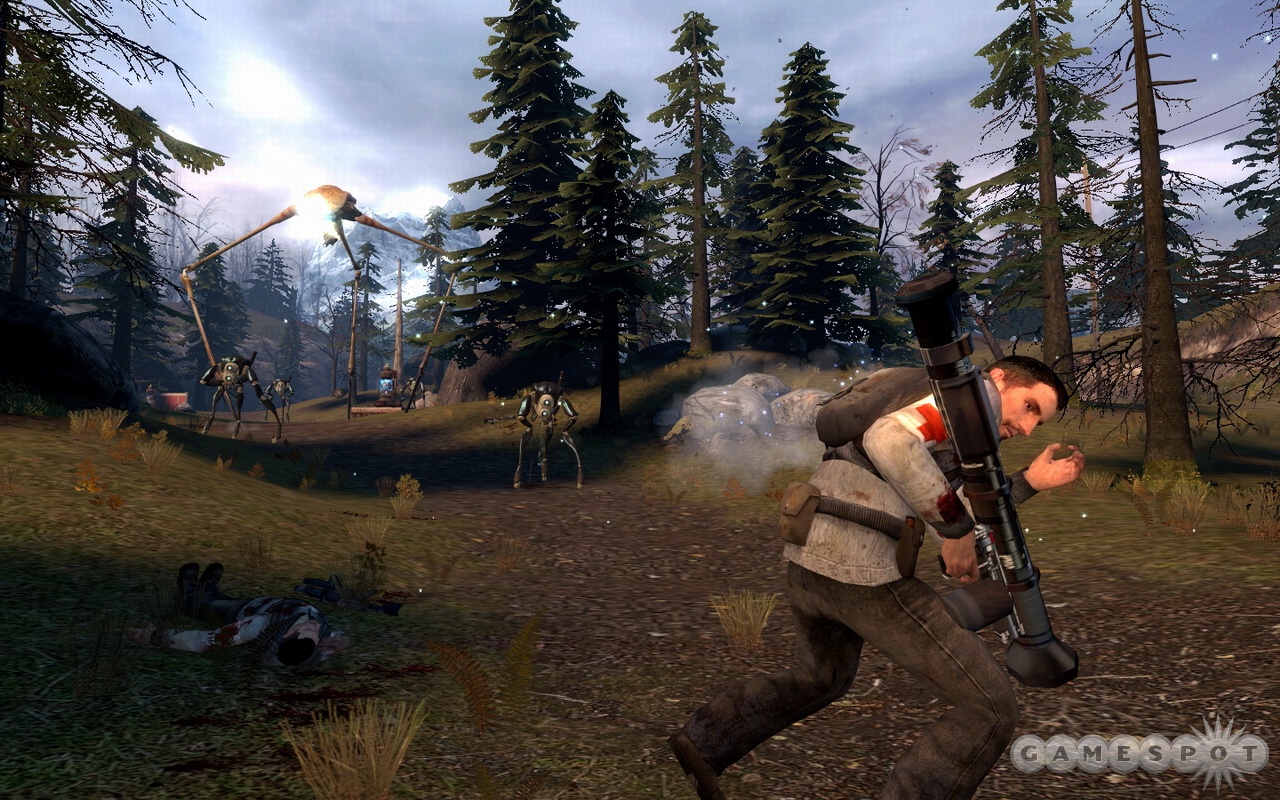
The action in Episode Two is about two parts combat and one part puzzle-solving, as you usually have to figure out a way to navigate through the level. This can involve using the gravity gun to manipulate electrical cables to get current to a radio, or figuring out how to use the environment against opponents. A good example of the latter involves the hunter, which is one of the new enemies introduced in Episode Two and one of the toughest we've seen in a Half-Life game. The hunter is a Combine synth, so it's in the same family as the dreaded strider. And in many ways, the hunter is like a strider, only much smaller so it can chase you indoors. Like striders, hunters can absorb massive amounts of damage, which makes them difficult to take down. Meanwhile, they're armed with explosive plasma darts that can knock down your health and armor in a hurry. Even worse, hunters have a nasty habit of charging at you like a bull, and if they hit you they'll deal a lot of damage and send you hurling through the air--which is more proof that Valve is having fun with physics. A single hunter is tough enough, but we encountered them in packs, which makes them a lot tougher. The most brutal encounter we saw involved a Combine ambush of Gordon and Alyx, with multiple hunters backed up by a squad of Combine soldiers. You'll have to hole up inside a large house (that's thankfully stocked with those helpful resupply crates) and will have to survive the onslaught. One hint: Hunters don't deal well with being knocked around, so put that gravity gun to use and grab things that are large and made of metal.
Episode Two comes off as challenging, which is good considering you've probably gotten used to waxing those pushover Combine soldiers by now. We're also impressed by how good the episode looks. Valve continues to enhance the Source engine, adding better high dynamic range lighting, support for multicore processors, a revamped particle system, large-scale cinematic physics, and more. The good news is that it is also longer than Episode One, as the designers said that their play-tests showed six to eight hours of gameplay, as compared to four to six hours for Episode One. And Episode Two is just one part of the Orange Box package. Next, we'll go over Team Fortress 2.
The original Team Fortress was one of the very first team- and class-based multiplayer action games. Sure, games such as Quake featured competitive multiplayer, but Team Fortress helped introduce the idea of distinct player classes. The development of Team Fortress 2 is a story in itself, as Valve has gone through several iterations before arriving at the final game. As programmer Charles Brown said, Team Fortress 2 is the "culmination of 10 years of multiplayer knowledge" at Valve, which is an impressive thought considering we're talking about the creators of some of the most popular multiplayer games ever made, including Counter-Strike.
It's hard to even begin discussing Team Fortress 2 without first going over the game's unique art style. Rather than going for gritty photorealism, Valve went in the opposite direction and embraced a look that seems inspired by computer-animated movies like The Incredibles. It's oversized, bright, and colorful, which makes sense given the over-the-top action in multiplayer action games. In fact, that was one of the driving forces for the style. "With Team Fortress, we have a lot of weapons that aren't realistic, our physics is a bit more exaggerated, and all of that pushed us more into this realm of having these humorous moments develop, so instead of combating that with something realistic, we chose to embrace that and go with something a bit more exaggerated," Brown said.
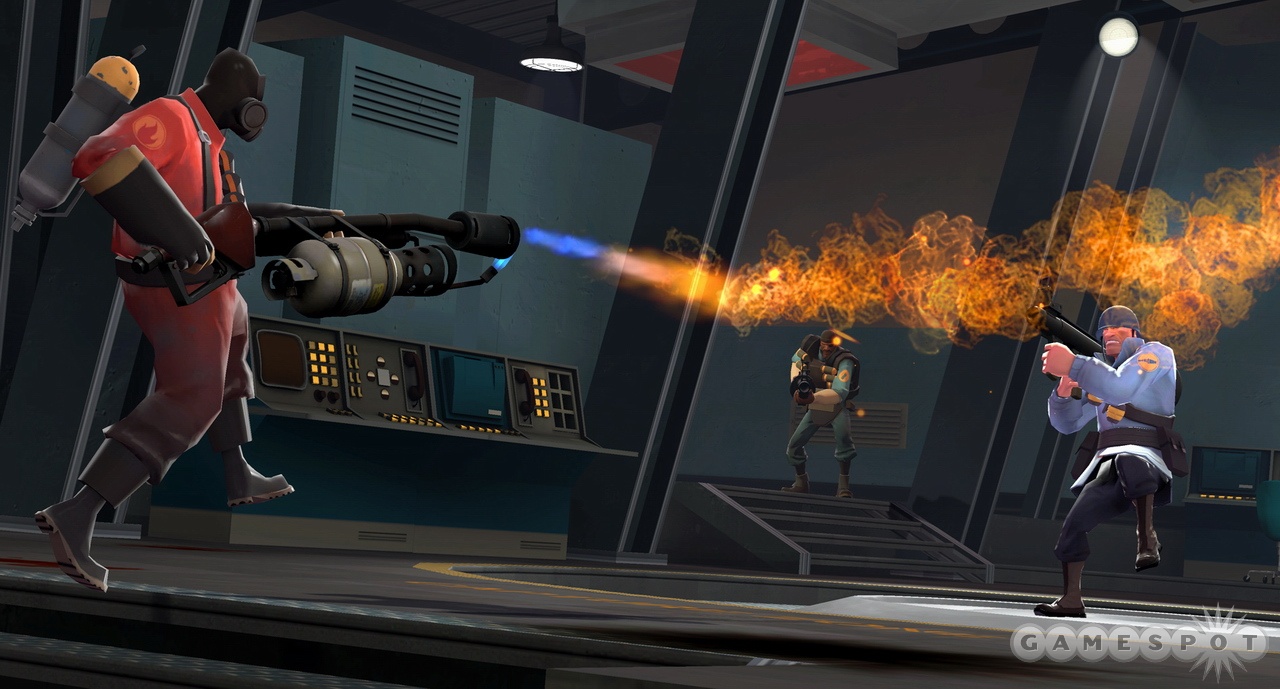
Each class in the game is designed to be as distinct as possible, in terms of both appearance and gameplay. There's an incredible amount of depth and balancing in the game, but we'll briefly cover each class and its role on the battlefield.
The scout is by far the fastest of all the classes, able to zip around a level at lightning speed and armed primarily with a shotgun so he's got a sting. Unfortunately, he's also incredibly fragile (probably because he's wearing a T-shirt), so it doesn't take much to take out a scout. The soldier is more plodding than the scout, but he can absorb more damage and carries a rocket launcher that can deal more damage. We suspect that the soldier will be a popular class for beginners, since the class has a good mix of speed and damage, and the rocket launcher doesn't require a lot of finesse. Then there's the heavy, a big guy armed with a chaingun. The heavy is quite possibly the slowest class, but he can also absorb the most damage (we hit one heavy with three or four rockets and he still wouldn't die). Meanwhile, the chaingun can spit out rounds at a very rapid pace and inflict serious harm, though the downside is that it takes a second or two to spin up. However, the heavy's alternate fire spins the barrel up so it's ready to fire at a moment's notice, though the heavy is as mobile as a sloth while it's spinning.
The pyro is the flamethrower-equipped class. Deadly up close but vulnerable from a distance, the pyro is a perfect ambush class. Just wait for the enemy to turn the corner and torch them. The sniper is pretty self-explanatory, though one of the abilities of the sniper is that the longer you are zoomed in on a target, the more powerful the shot will be when it's delivered. The demoman is another support class, and it's the only class with grenades. The decision to remove grenades from the other classes was made to eliminate the annoying grenade spam (a never-ending hail of grenades that can make a game frustrating) as well as to make each class feel even more distinct. Armed with a grenade launcher, the demoman can launch grenades that explode on contact with the enemy, and grenades that miss will automatically explode after a few seconds. The demoman can also manually detonate the grenades with his alternative fire.
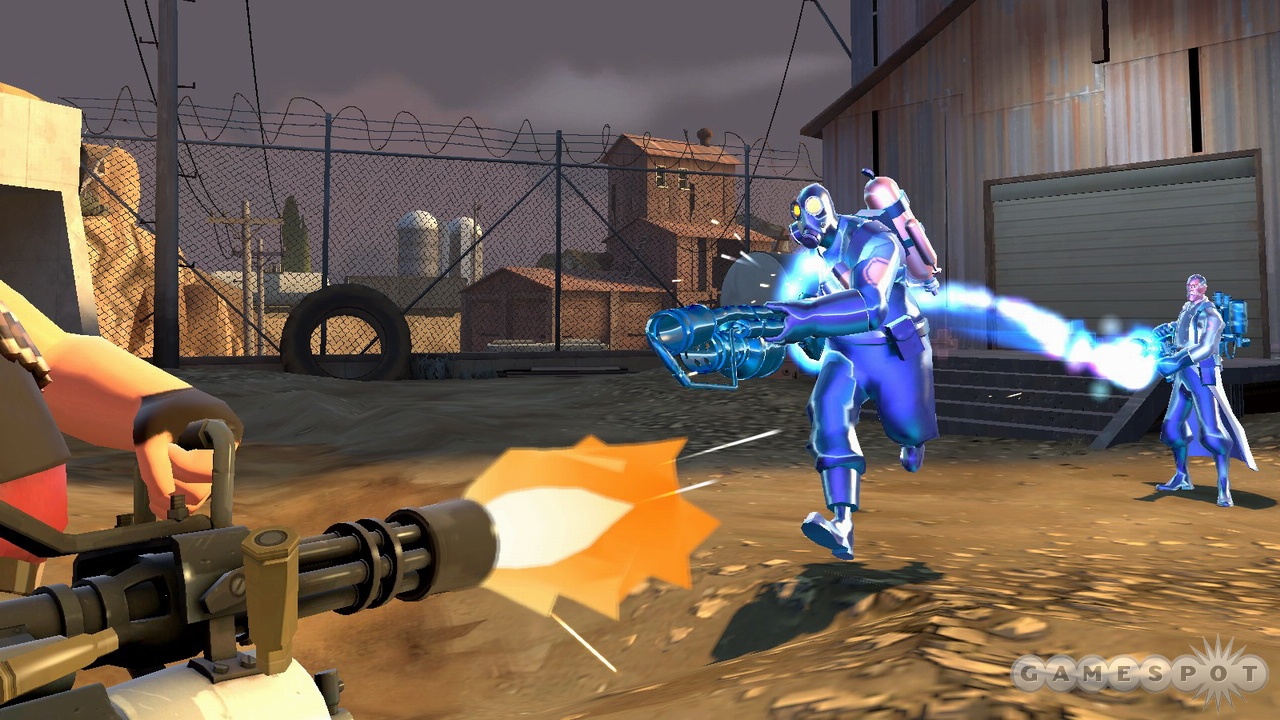
The engineer is one of the more interesting classes because he has real-time strategy-style build capabilities. By scavenging metal in the form of weapons recovered from the battlefield, the engineer can build sentry guns (which are particularly useful to combat fast-moving scouts), health dispensers, and teleporter entrance and exit pads around the level. The engineer is also armed with a shotgun, but his main purpose on the battlefield is to support the rest of the team by building and repairing the aforementioned structures. Another interesting class is the medic, who can heal other classes with his special healing device. A nice twist is that the medic can also stay "tethered" to another player and build up a healing charge that, once full, can be used to make both the medic and the tethered player invulnerable for 10 seconds. This can be useful if you need to charge into a well-defended room. Finally, there's the spy, an infiltration class that can cloak themselves to turn invisible to the enemy as well as assume a disguise that makes the class look like members of the other team. As soon as the spy attacks, he reveals his presence or blows his cover, but this can be useful for sneaking up behind someone and going for an instant kill.
Put all of these classes together and Team Fortress 2 is a wild and dynamic game--but Valve wanted to go even further and address issues found in many shooters, including Counter-Strike. One of these is the sense of repetition in many games, or the feeling that the same maps are played over and over again the same way. One of the six maps that will ship with Team Fortress 2 is designed to counter this. It's called Hydro, and it's broken into territories. There is a base for each side, as well as a neutral ground with four capture points on it. However, the game decides by algorithm which two capture points are in play at any time, so that focuses the efforts on both teams. Since the map is asymmetrical and it's hard to predict which capture points are in contention, it creates a fluid situation on the ground. Other maps will offer different gameplay modes, such as a capture-the-documents game where you have to retrieve three suitcases from the opposing team's base while protecting your own, as well as a capture point mode that links the capture points in a successive chain.
While the PC, PlayStation 3, and Xbox 360 versions will be identical in terms of maps and modes, the PC version will support up to 24 players on a server, while the two console versions are limited to 16 per server. And no, there will be no cross-platform support, so PS3 and Xbox 360 players won't be able to battle one another, and neither will PC and Xbox 360 players.
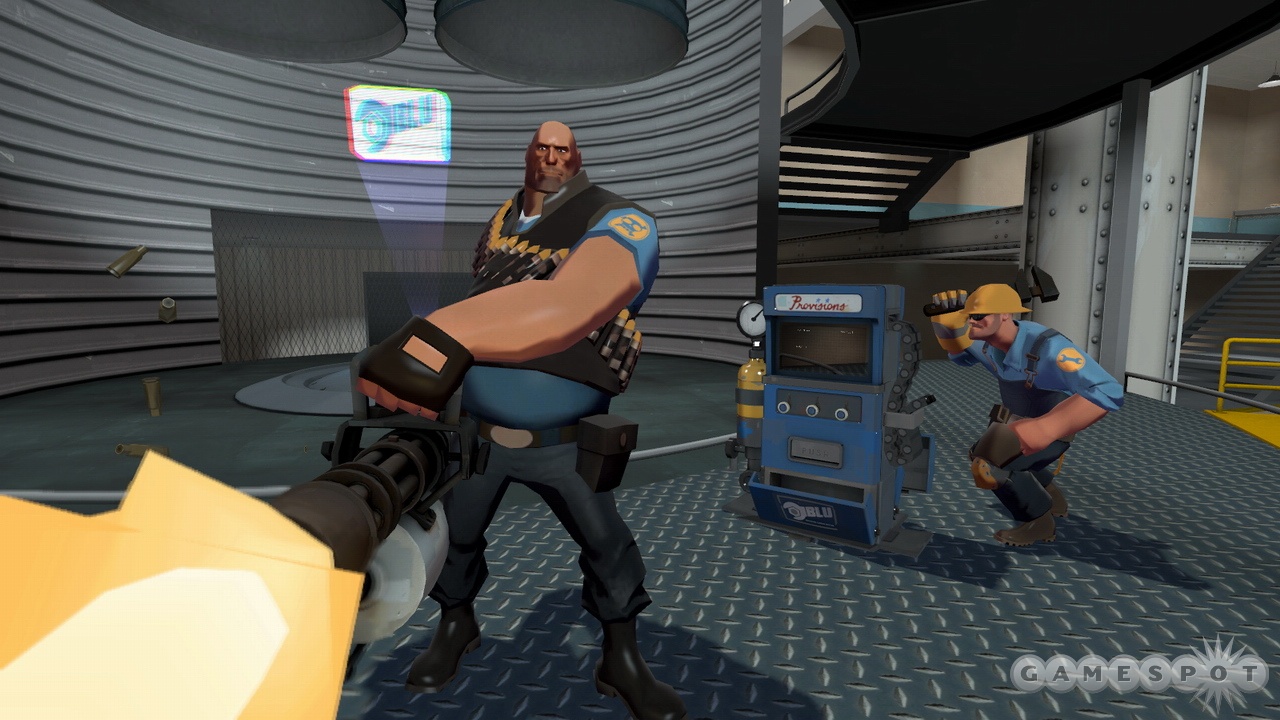
Team Fortress 2 looks fairly polished at this point, and the game has all sorts of fun little extras that make it stand apart from the pack. A detailed statistics system will fill you in on your performance with all sorts of interesting trivia, while a save-the-moment snapshot system will help you capture those over-the-top moments when you or your attacker meets a particularly spectacular (or grisly) fate. Our favorite little feature was the nemesis feature. If someone kills you five times unanswered, he becomes your nemesis and is marked with two fists over his head. Now there's extra motivation to take him out, and if you do so, you score extra points.
With Episode Two, Team Fortress 2, and the compelling Portal, The Orange Box is going to be a commanding package for anyone who likes single- or multiplayer action games. Sure, Episode Two was supposed to ship last year, but it appears the delay will be well worth the wait, as Valve is packing a lot of gameplay into the package. We can expect The Orange Box to ship this fall.
Got a news tip or want to contact us directly? Email news@gamespot.com
Join the conversation